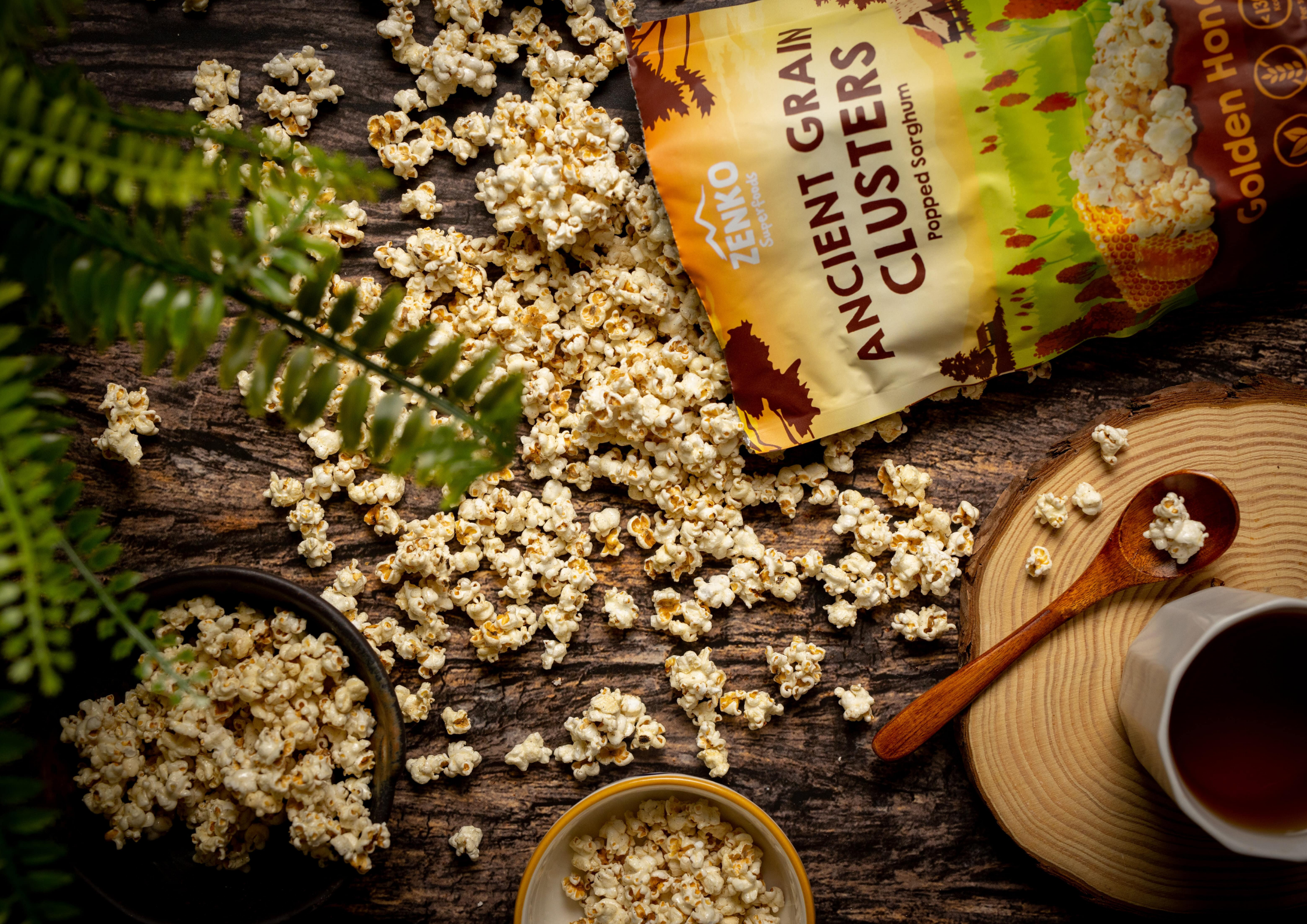What are Ancient Grains?
Ancient grains have been around for about 10,000 years, when prehistoric communities started to transition from their hunter-gathering ways to farming. Amaranth, millet, kamut, sorghum, teff, farro and freekeh are just a handful of the many ancient grains that can still be found. They played a key role in the spiritual life of several ancient civilisations, such as the Azects, Greeks and Egyptians.

Unlike modern wheat (corn and rice), ancient grains have never been processed through hybridisation or genetic modification. Therefore, these untouched grains boast a far richer nutritional profile as compared to modern wheat.
In addition to the myriad of health benefits it provides, it also makes an attractive choice to consumers due to the environmentally friendly nature of the cultivation process of the crop. Many ancient grains grow easily with little human intervention which allows farmers to use lower levels of fertilisers and pesticides.
Sorghum: Ancient Grain in Modern Times

We decided our luck with one of the many ancient grains – sorghum. When we popped them, the grains created miniature versions of popcorn and we thought that it would be a great new superfood snack to share with the world!
The origins of sorghum, one of the seven ancient grains, dates back to the 8,000 B.C. near the Egyptian-Sudanese border. It has since then been distributed throughout the continent due to the crops’ adaptability to different types of climate and soil. The development and spread of sorghum can be attributed to the movement of various tribal groups in Africa, which eventually led to the crop spreading to India, China and all parts of the globe.

India is the second largest producer of sorghum in the world, accounting for over 70% of the total sorghum production on the continent. It is the country’s third most important crop, and is grown on 11 million hectares, mainly in the semiarid regions of Maharashtra.
Traditionally, sorghum has been utilized globally in different types of cuisine. From the use of sorghum flour to make Jowar Roti in India to the fermentation of the grains in Chinese Baijiu (白酒), sorghum has been used as a staple in traditional cuisine.
However, these crops have suffered a loss of popularity and poorly developed value chains as it is often viewed as “old fashioned”. Many farmers have chosen to plant other crops such as sunflower, soybeans and cotton which are considered high in demand as compared to sorghum. The increase in popularity of GMO crops (wheat and rice) foreshadows the eventual disappearance of sorghum in the near future.
Therefore, by creating a snack out of sorghum, we hope to support the farmers whose lives depend on this crop, giving them a reason to continue cultivating it. In addition, we also hope to elevate and incorporate this ancient superfood into your daily lives by turning this healthy grain into a fun snack that everyone can enjoy!
The Health Benefits of Sorghum

You might be wondering, is sorghum good for me? Yes, no doubt it is! These tiny little grains provide a significant amount of nutrients. Let’s take a closer look at the health benefits.
-
Aid with digestion
A serving of sorghum contains 48% of the recommended daily intake of fiber, making it one of the most powerful grains for digestive health. This in turn helps to decrease the risk of cardiovascular disease and diabetes, two of the most common chronic diseases worldwide.
-
Lower glycemic index
As compared to modern wheat such as corn and rice, sorghum has a decreased insulin and glycemic response. It is therefore a good substitute for rice in most recipes as it assists in managing glucose and insulin levels in individuals.
-
Gluten-free grain option
The USDA recognises sorghum as 100% gluten-free, making it safe for people with Celiac Disease or those who are gluten intolerant to eat it on a regular basis. Both sorghum flour and whole grain sorghum are great substitutes for wheat-based recipes.
-
High in antioxidants
Sorghum is high in antioxidants like flavonoids, phenolic acids and tannins which helps to prevent cell and DNA damage. Antioxidants play a role in cancer prevention, and the intake of these powerful cell protectors has been shown to decrease the risk of certain types of cancer.
-
An excellent source of protein
This grain is a great source of protein. In fact, it provides as much protein as quinoa, a cereal grain renowned for its high protein content.
Zenko's Ancient Grain Clusters

And now… let us introduce to you our new superfood snack series – the Ancient Grain Clusters. We decided to keep things simple and go for two sweet flavours that we know everyone would love, Dark Chocolate and Golden Honey. For our vegan friends, we have created two new vegan flavours; Apple Cinnamon and Salted Caramel. The natural coating ensures that the tiny pops stick together, eventually creating giant clusters.






